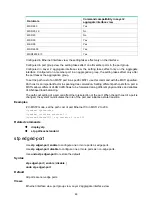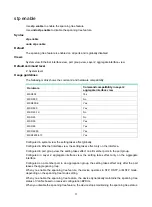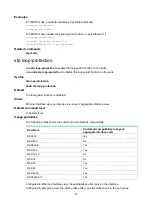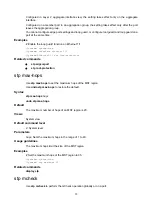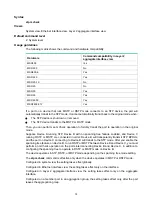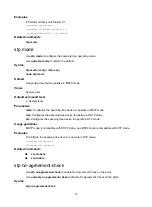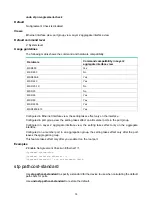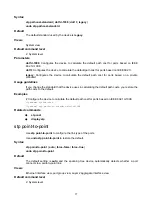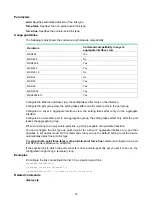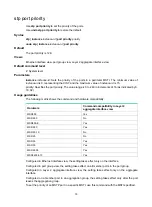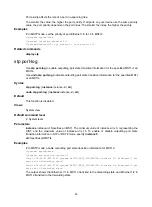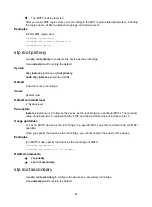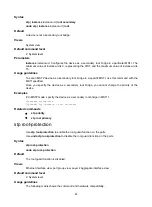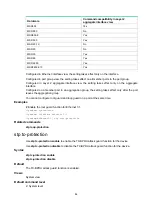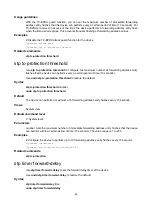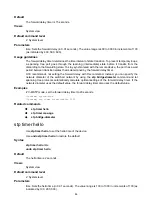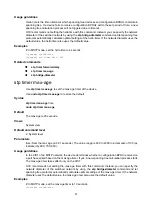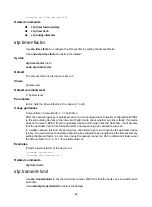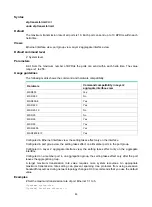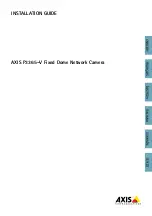
74
Syntax
stp mcheck
Views
System view, Ethernet interface view, Layer 2 aggregate interface view
Default command level
2: System level
Usage guidelines
The following matrix shows the command and hardware compatibility:
Hardware
Command compatibility in Layer 2
aggregate interface view
MSR800 Yes
MSR 900
No
MSR900-E Yes
MSR 930
Yes
MSR 20-1X
No
MSR 20
No
MSR 30
Yes
MSR 50
Yes
MSR 2600
Yes
MSR3600-51F Yes
If a port on a device that runs MSTP or RSTP mode connects to an STP device, the port will
automatically transit to the STP mode. It cannot automatically transit back to the original mode when:
•
The STP device is shut down or removed.
•
The STP device transits to the MSTP or RSTP mode.
Then, you can perform an mCheck operation to forcibly transit the port to operation in the original
mode.
Suppose Device A running STP, Device B with no spanning tree feature enabled, and Device C
running RSTP or MSTP are connected in order. Device B will transparently transmit STP BPDUs,
and the port on Device C connecting to Device B will transit to the STP mode. After you enable the
spanning tree feature on Device B, to run RSTP or MSTP between Device B and Device C, you must
perform an mCheck operation on the ports interconnecting Device B and Device C, in addition to
configuring the spanning tree to operate in RSTP or MSTP mode on Device B.
The device operates in STP, RSTP, or MSTP mode depending on the spanning tree mode setting.
The
stp mcheck
command is effective only when the device operates in MSTP or RSTP mode.
Configured in system view, the setting takes effect globally.
Configured in Ethernet interface view, the setting takes effect only on the interface.
Configured in Layer 2 aggregate interface view, the setting takes effect only on the aggregate
interface.
Configured on a member port in an aggregation group, the setting takes effect only after the port
leaves the aggregation group.










